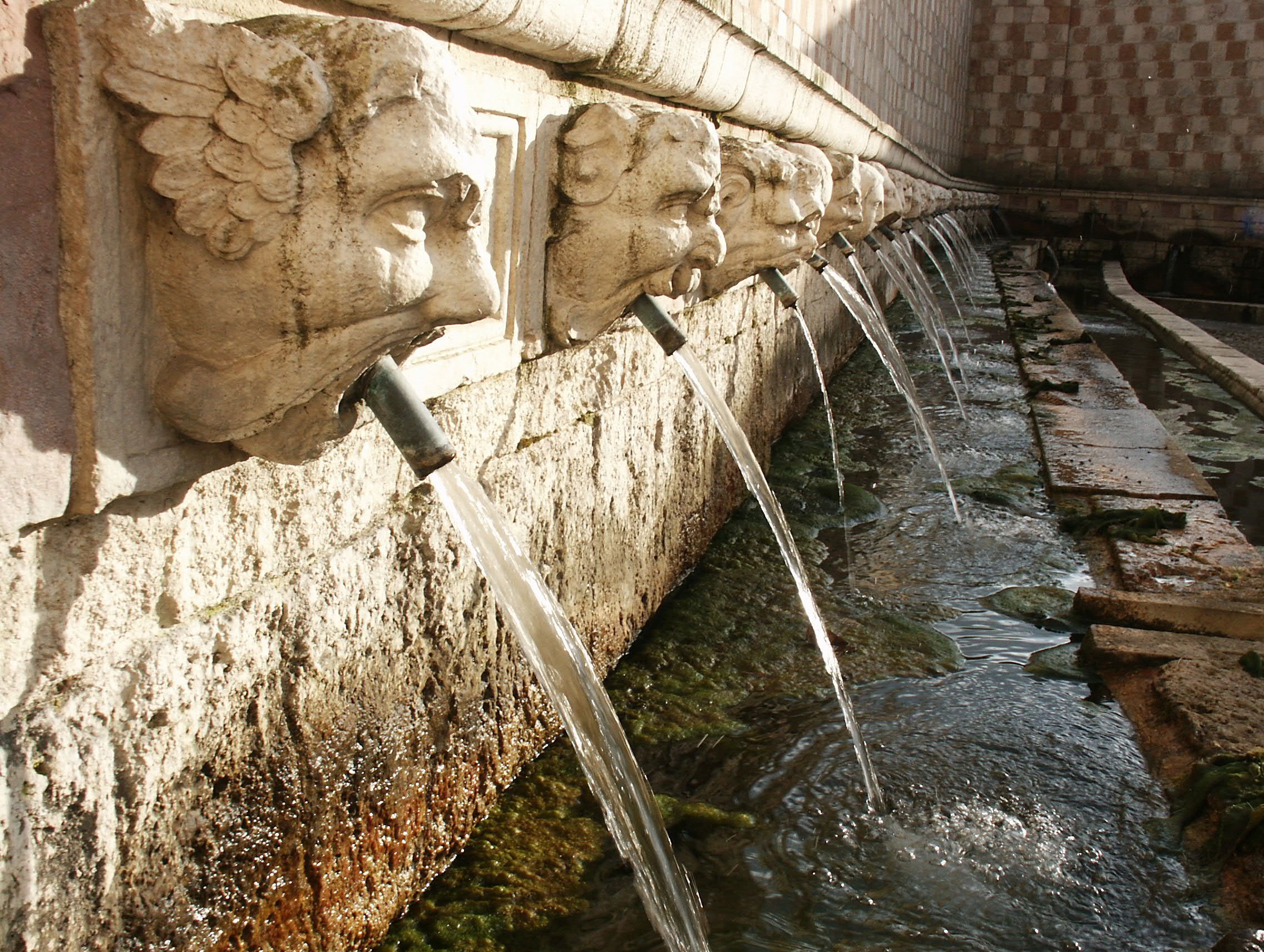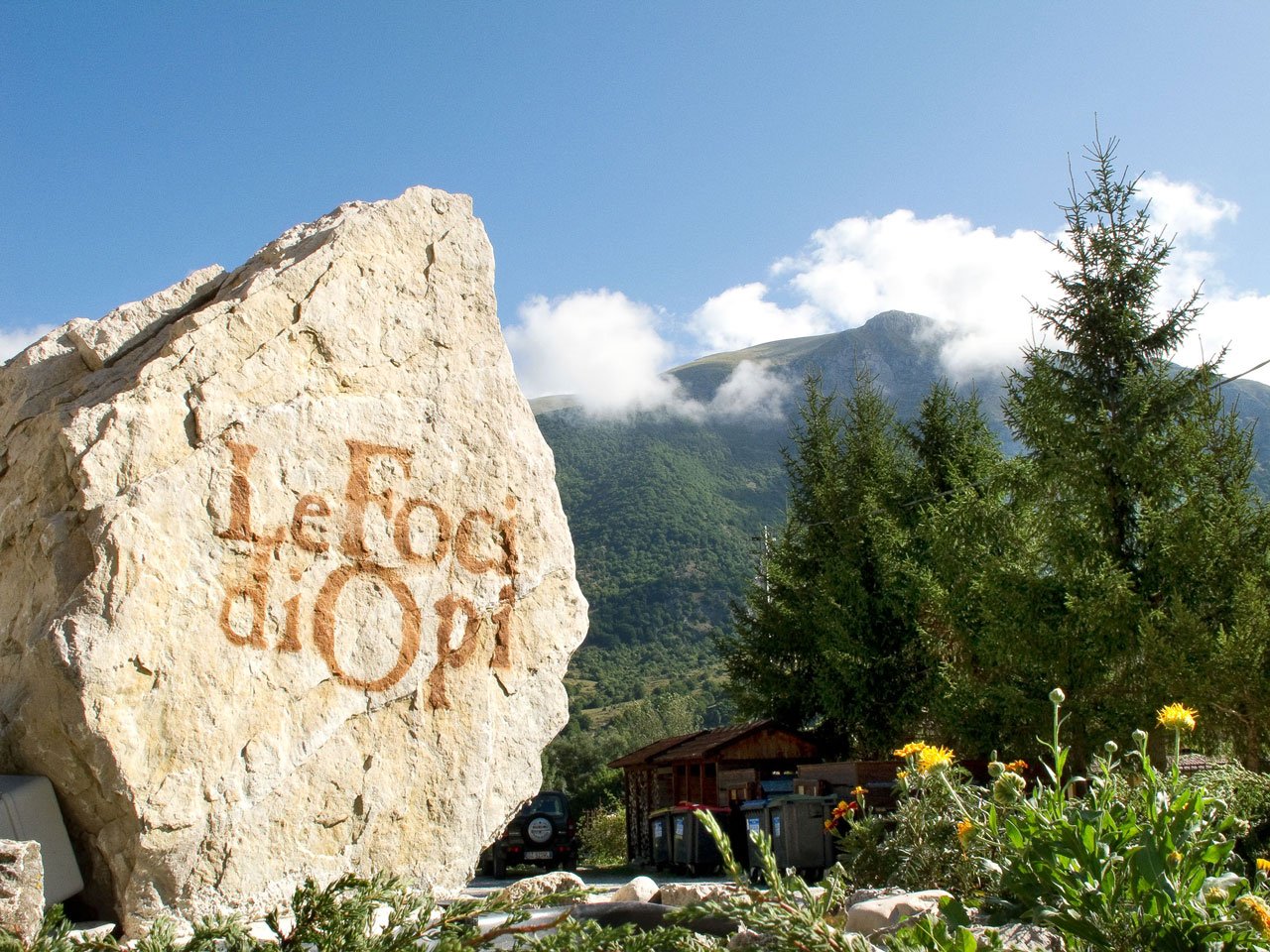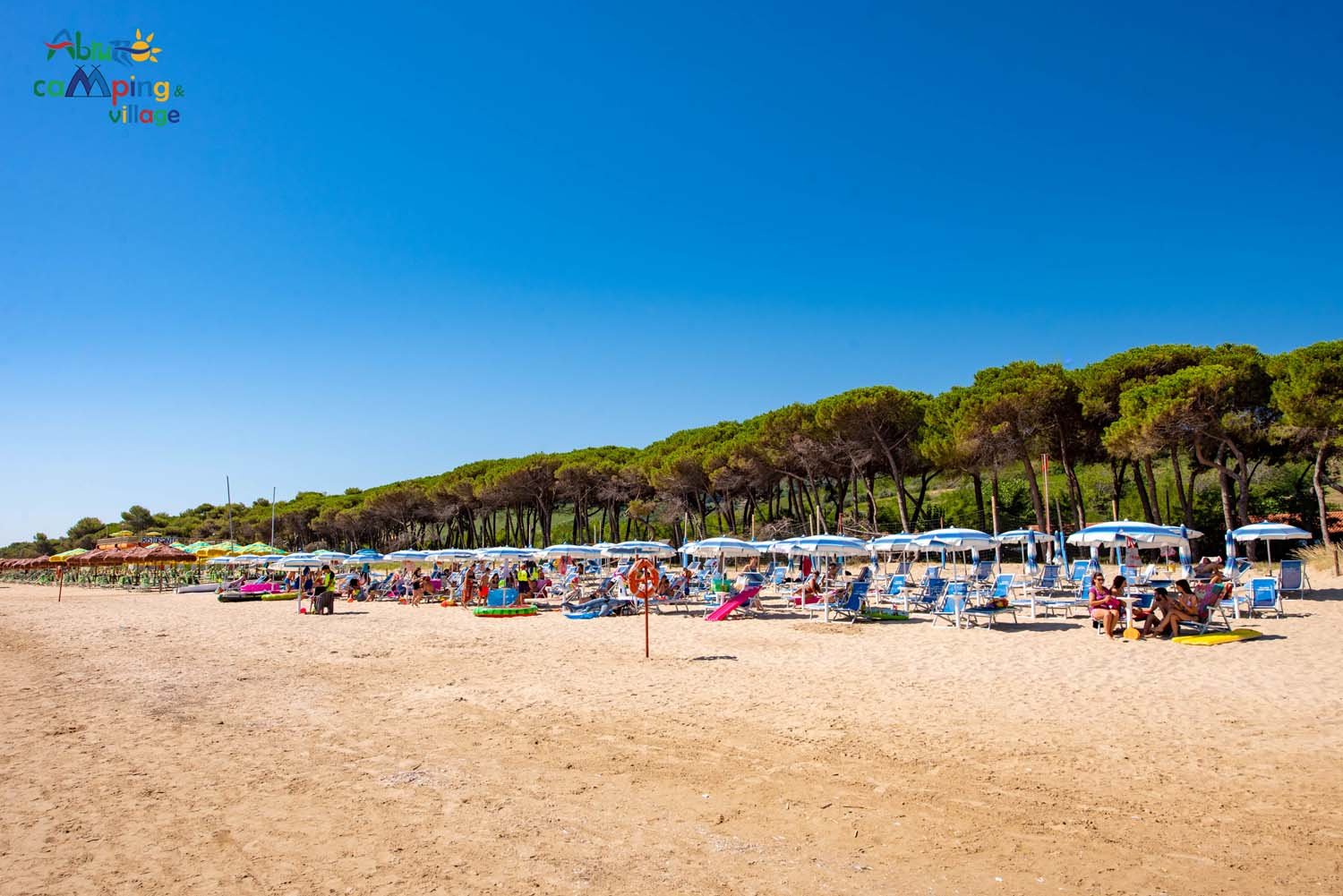The Fountain of the 99 Spouts
In the historical centre of L'Aquila, adjacent to the Walls, a large quadrangular square opens up and on three sides are 93 stone masks, all different, plus six spouts: this is the famous Fountain of the 99 Spouts. A fine monument of undoubted historical and architectural interest that has always been shrouded in an aura of mystery and has given rise to many legends.
The work began in 1272 when, based on a design by the architect Tancredi da Pentima, the back wall was built, as testified by the plaque on it. And it was immediately a mystery: no one ever knew which spring fed the spouts, so much so that it is said that Tancredi da Pentima was buried in the centre of the square, and with him the secret of the spring.
The fountain was completed in the following centuries . In the 15th century, the walls were covered with a chessboard decoration made of white and pink stone, in the second half of the 16th century, the left wall was built, attributed to Alessandro Ciccarone, while the right wall dates back to the 18th century.
Tradition has it that the masks represent the lords of the 99 castles that founded the city, just as there are 99 squares and churches. In reality, these are not exactly the numbers, and it is likely that the six spouts without masks and without any apparent function were added to feed the legend associated with the number 99.
As to the interpretation as to who the masks represented, there has been a flurry of stories and legends giving the most diverse readings: there is talk of demons and monks, of spells protecting the city from evil, of strange events occurring on full moon nights.
Certainly the fountain exudes a special charm with its long sequence of stone faces, all different, that seem to stare motionless at the visitor.

 IT
IT EN
EN








 DE
DE